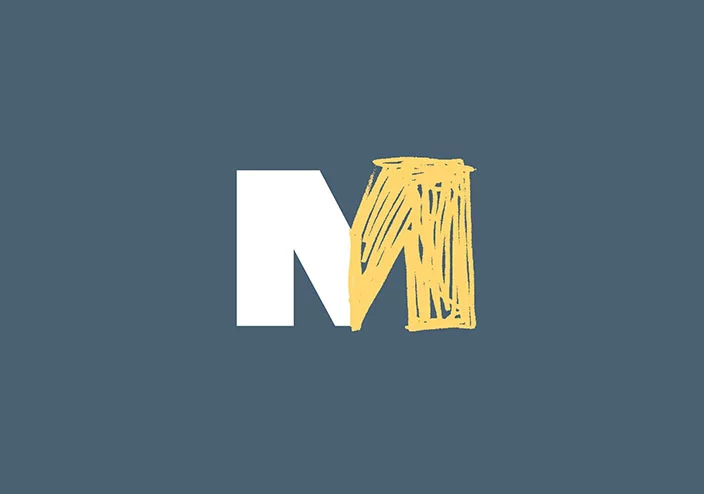Mursion recently hosted Jason Chen, Ph.D., Gerdelman Family Term Distinguished Associate Professor at William & Mary School of Education, for “Hot Off the Press: Simulations to Develop Champions for Diversity.” This edition of our ongoing “Future of Work” virtual roundtable series featured an insightful discussion with Dr. Chen about harnessing the power of virtual reality simulations to develop diversity in a range of workplaces, in particular educational and scientific settings.
The following is an excerpt of Dr. Chen’s talk.
“My research focuses a lot on how we direct people’s motivation toward things that are difficult. I used to be a high school chemistry and physics teacher. As you can imagine, that’s probably one of the last places people like to be, so I thought about motivation a whole lot. I wanted to know, how do we direct kids’ motivation towards things like scientific inquiry?
In the last three or four years, I’ve been thinking a lot about how do we direct people’s motivation towards doing things like advocating for diversity, doing things that require a little bravery, and maybe being an unpopular person in the room if you’re calling in some mildly sexist comments, or that sort of thing. That does take a lot of directing your motivation to something hard. Those are the sorts of questions that really excite me and puzzle me.
What I thought I’d do today is just going to share with you a little bit of background about what this project I’m engaged in is all about. It’s funded by National Science Foundation, and actually, just ended in February. We’ve got further funding to keep it going.
The project is called GeoDES, which is Geoscience Diversity Experiential Simulations. What we’ve learned is that even though we’ve been doing diversity type programs for the past four decades, geosciences is still one of the least racially diverse STEM fields. Six percent of all geoscience doctorates in 2016 were conferred to underrepresented minorities. That’s the wicked problem we’re tackling here with this project, how do we create a more diverse, equitable, and inclusive environment in geosciences?
Here is my second question to you all. Why is a lack of diversity a problem? We talk a lot about, we need to increase diversity of X field. Why do we need to do that? What’s wrong with having a homogenous workforce? This is a quote from Telle Whitney who says that diversity drives innovation. “When we limit who can contribute, we in turn limit the problems that we can solve.” If geosciences is so homogeneous, what we’re doing is we’re limiting what the science can do, and therefore, we’re limiting the science.
How Can Diversity Training Be More Effective?
What we’re finding in the literature is that the overwhelming weight of the evidence shows that your typical diversity training schemes are largely ineffective. They don’t do a whole lot for changing people’s beliefs, and they sure as heck do not change people’s behaviors. At the end of the day, if you want to create a more inclusive and equitable climate in your workplace, that’s about behaviors.
For me, as an educational psychologist, I’m interested in how do we change behaviors. Now, anybody who’s been in a relationship knows that it’s really hard to change the way people behave. That’s another aspect of this, how do we change behaviors knowing that people are resistant to change in their behaviors.
As a researcher, I think a lot about how do our programs tie in with theory. We drew from two different types of theoretical frameworks. The first one’s called social closure theory. It’s a fancy way of talking about gatekeeping. If you come from a social closure approach, what we do is we recognize that institutional change requires that our people know that institutions have gatekeeping functions, and those functions inhibit diversity, equity, and inclusion.
What we did for our programs, we recruited people who we thought could be important gatekeepers in their institutions. We were recruiting geoscience professors, and we were trying to develop their abilities to recognize what those gatekeeping functions were, how they inhibited diversity, equity, and inclusion, and how they could start disrupting those gatekeeping functions so that the department could be more diverse, equitable, and inclusive.
Now, we know that you just can’t wake up the next morning and be an amazing advocate for diversity. You can’t be a passive bystander one day and wake up the next day being amazing. We recognize that in order to be able to advocate for diversity, equity, and inclusion, you really have to put some work into it. Part of what our program is doing is we’re trying to develop the capacity, the beliefs that they can do it. This draws from something called social cognitive theory, and at the very crux of this theory is this idea called self-efficacy.
We recognize that in order to be able to advocate for diversity, equity, and inclusion, you really have to put some work into it.
What is self-efficacy? It’s basically confidence in being able to attain a particular outcome. If I’m confident that I can score a goal in soccer on this particular team, then I have a high self-efficacy for doing that. Self-efficacy is a really thoroughly researched concept. It’s been studied for five, six decades, but what is a little bit less known is how we build self-efficacy.
The most influential way you build self-efficacy is by mastery experiences. That means if you view past experiences as being successful, you’re more likely to go into the future thinking, “Yes, I can do that.” If in the past you’ve advocated for diversity and you thought that you did a good job of that, you’re more likely to go into the future thinking, “Yes, I can keep doing this,” but if you had some experiences in the past where you’re like, “Man, I don’t think I did a great job of that,” then you’re more likely to go into the future going, “Yes, I don’t think I can do this.”
The most influential way you build self-efficacy is by mastery experiences.
The second way that we can build self-efficacy is through vicarious experiences. That’s where we recognize the influence of models. If I go, “Hey, if that person can do it, that person is a whole lot like me, so if they can do it, then so can I.” Vicarious experiences can be very powerful if you’ve never had a mastery experience before. A third way, social persuasions. If folks we trust tell us, “Hey, you’re doing a really good job of this,” we’re more likely to build our self-efficacy and doing that.
Finally, affective states refers to moods, your anxiety, could be positive affect, could be negative affect. Those things also really influence your self-efficacy. These simulations were designed so that we could give them mastery experiences, vicarious experiences, social persuasions, and affective states, or really help their affective states to be in the positive direction rather than in the negative direction.
Becoming a More Confident Advocate
What did we learn? In this particular case, we’re asking people how confident are you that you can identify microaggressions? How confident are you that you can tactfully call them in.
We’re also asking them questions like how confident are you that you can advocate for more inclusive and equitable environments in your department?
Just to give you context, self-efficacy is rated from one through six. One literally says not at all confident, six means completely 100% confident. Three means, “I’m not that confident.” Four means, “I’m a little bit confident.” The medium before they get into GeoDES is hovering around between a three and a four. By five months into the program, they’ve gone through two simulations and now we’re up at four and a half. That represents what’s called a credible mean. I’m not saying it’s statistically significant because the statistical method we’re using is something called Bayesian analysis.
With Bayesian analysis, we talk in terms of credible gain versus statistically significant gain. I can talk more about that later in a different context, but then what you’ll see is then at one year their self-efficacy comes down, but it’s still incredibly different or higher than at pre-intervention. Overall, over the course of a year, our participants were able to make gains in their self-efficacy, which means that they’re more likely to actually engage in these behaviors.
You’ll also see changes in collective efficacy. Collective talks about the group. These are questions that say something like, “How confident are you that you can work together with your department to realize departmental goals in diversity?” That’s a heavier lift as you can imagine. At pre-intervention, we’re hovering righter a little bit above a three. By five months in, it’s a little bit above a four. That is a credible gain in collective efficacy.
Areas of Opportunity
Another aspect that I wanted to show of the research results is we looked at where there differences as a function of demographics with self and collected efficacy. I want to point out on self-efficacy what we see here is that white faculty compared to their faculty of color are less self-efficacious. They’re less confident in being able to engage this.
When we look at collective efficacy, it’s also a little bit disheartening because what we see is that your full professors and your distinguished professors are less confident that they can work with the department to make changes, and so are white faculty members. They are significantly lower in their collective efficacy beliefs compared to their peers who are faculty of color.
I do want to point out that there were no differences as a function of gender, so men and women were equally as confident in both of those realms, but I want to make sure that folks know that it’s most likely because of the way we’ve worded our questions, our questions were specifically about race.
A couple of concluding thoughts here. One of the things that’s born out in the data is that this is not a one-and-done intervention. We did three simulations and we did three follow-up conversations, but even with that, we see some decrements in collective efficacy and we think that the interventions require a lot more follow through it. Another concluding thought is just that institutional change is a heavy-lift. You’ve got to collaborate with administrators and really get into their social networks.
The other thing is that technology can be a powerful tool because we’re able to record these sessions and so people can look at their recordings and go, “I didn’t do that so well.” They can also share their videos with other people and talk about it and say, “Oh, I like how you did that.” That gets at the vicarious experiences with self-efficacy. These are ways that you can use the tool or the technology to build people’s self and collective efficacy.
Mursion regularly hosts its “Future of Work” virtual roundtable series featuring industry experts and thought leaders to discuss timely and thought-provoking topics affecting our workplaces today.
Subscribe for the latest Mursion articles and updates.
By clicking the sign up button above, you consent to allow Mursion to store and process the personal information submitted above to provide you the content requested. View our Terms and Conditions.




